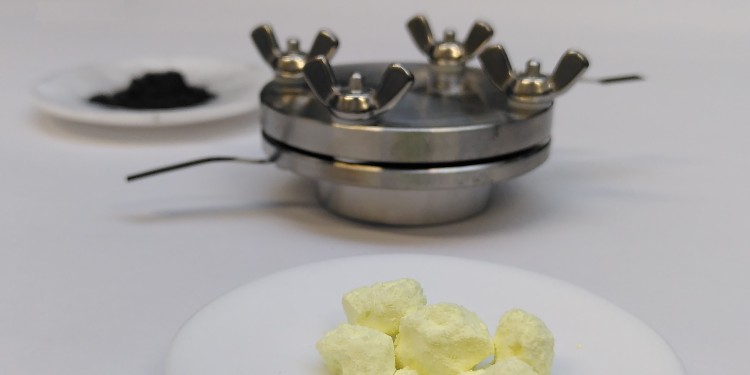
Researchers investigate advantages of sulphur-containing cathodes
MEET Battery Research Center of the University of Münster starts a new research project in 2022: In the joint project “AReLiS-2”, lithium-sulfur batteries (LSB) and thus a potential successor to today's lithium ion batteries are being investigated. The focus of the research is on sulfur-containing cathodes as well as polymer, solid-state and hybrid electrolytes. Insights into these critical battery components are expected to pave the way for the application of next-generation battery systems. Sulfur as a cathode material offers high capacity, low raw material costs, a small environmental footprint and globally distributed raw material reserves. Their practical application is hindered by the still rapid ageing of the battery cell: After just a few charge and discharge cycles, the capacity of the lithium-sulfur battery can drop to a low level. The causes are closely related to the dissolution of polysulfides (PS) in the electrolyte and the subsequent irreversible deposition of sulfur species on the anode. Several approaches are expected to improve the cycle life of LSB: for example, using electrolytes with low PS solubility, encapsulating sulfur species in carbon pores, replacing sulfur with metal sulfides, or using polymer or solid electrolytes. The basic principles of these approaches were investigated in the previous project “AReLiS-1”, which focused strongly on the reactions of cathodes with liquid electrolytes.
“AReLiS-2” Focuses on Solid-State and (Gel) Polymer Electrolytes
The use of pure polymer, solid and hybrid electrolytes offers great potential for the development of LSB with long-term stability. This could, among other things, further reduce PS dissolution and increase the active material utilization. This is where “AReLiS-2” comes in: The project focuses on characterizing fundamental mechanisms of batteries operated with sulfur-containing cathodes as well as polymer, solid-state and hybrid electrolytes. Project manager Dr Simon Wiemers-Meyer, Deputy Head of the research division “Analytics & Environment” at MEET Battery Research Center explains: “The consortium combines extensive knowledge in the fields of material research, cell processing as well as analytical chemistry. We expect that the investigations of precisely selected cell systems in ‘AReLiS-2’ will provide deep insights into relevant processes of the respective lithium-sulfur batteries.
Cooperations/Financing
Until March 2023, MEET researchers will work in the project together with scientists from Forschungszentrum Jülich, Technische Universität Dresden, Fraunhofer IWS Dresden, Waseda University, Tokyo (Japan), National Institute of Advanced Industrial Science and Technology (AIST), Osaka (Japan), and Tohoku University, Sendai (Japan). The German part of the project is funded by the German Federal Ministry of Education and Research with around 776,700 euros.
